What is Electricity?
Electricity is the flow of electric charge, typically carried by electrons. It can take the form of static electricity, where charges build up on an object, or electric current, which is the flow of charge through a conductor.Electric Circuits
An electric circuit is a closed loop through which an electric current can flow. It typically consists of a power source (such as a battery), conductive wires, and components such as resistors, capacitors, and inductors.Electric Current
Electric current is the flow of electric charge through a conductor. It is measured in amperes (A) and is the rate of flow of charge past a given point in the circuit.Voltage
Voltage is the electric potential difference between two points in a circuit. It is measured in volts (V) and represents the energy per unit charge available to move the charge from one point to the other.Resistance
Resistance is the opposition to the flow of electric current. It is measured in ohms (Ω) and is dependent on the material and dimensions of the conductor.Ohm's Law
Ohm's Law states that the current through a conductor between two points is directly proportional to the voltage across the two points and inversely proportional to the resistance between them. It can be expressed as: V = I * R, where V is the voltage, I is the current, and R is the resistance.Electricity in Biology
[Electricity] Related Worksheets and Study Guides:
.◂Biology Worksheets and Study Guides High School. Introduction to animals
Worksheet/Answer key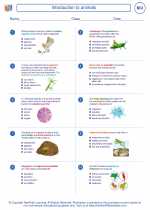 Introduction to animals
Introduction to animals  Worksheet/Answer key
Worksheet/Answer key Introduction to animals
Introduction to animals  Worksheet/Answer key
Worksheet/Answer key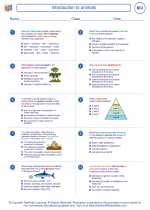 Introduction to animals
Introduction to animals  Worksheet/Answer key
Worksheet/Answer key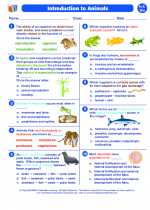 Introduction to animals
Introduction to animals  Vocabulary/Answer key
Vocabulary/Answer key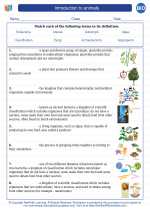 Introduction to animals
Introduction to animals  Vocabulary/Answer key
Vocabulary/Answer key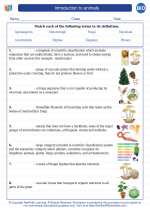 Introduction to animals
Introduction to animals  Vocabulary/Answer key
Vocabulary/Answer key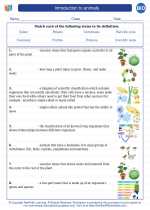 Introduction to animals
Introduction to animals 

 Worksheet/Answer key
Worksheet/Answer key
 Worksheet/Answer key
Worksheet/Answer key
 Worksheet/Answer key
Worksheet/Answer key
 Vocabulary/Answer key
Vocabulary/Answer key
 Vocabulary/Answer key
Vocabulary/Answer key
 Vocabulary/Answer key
Vocabulary/Answer key

The resources above cover the following skills:
Concepts of Life Science (SC1, SC2, SC3)
The student demonstrates an understanding of the structure, function, behavior, development, life cycles, and diversity of living organisms by describing the structure-function relationship